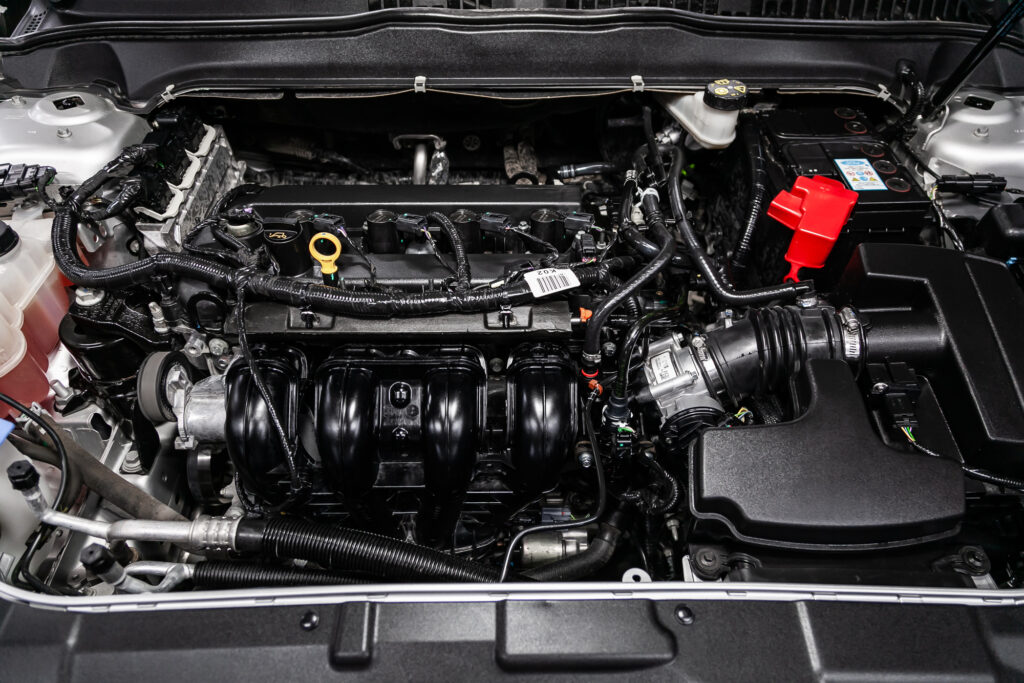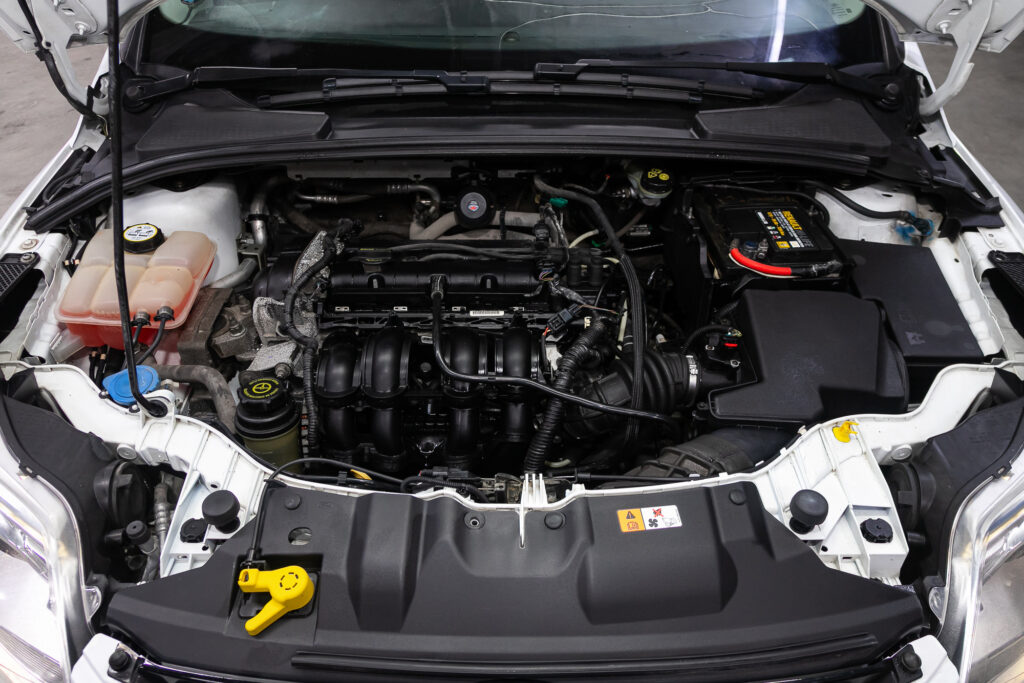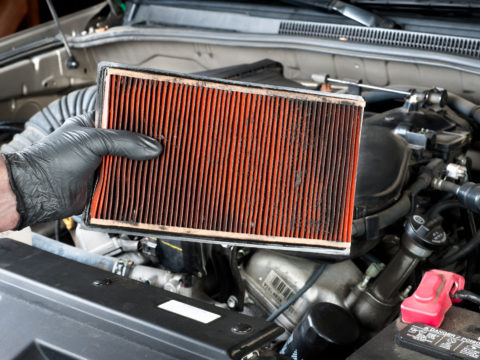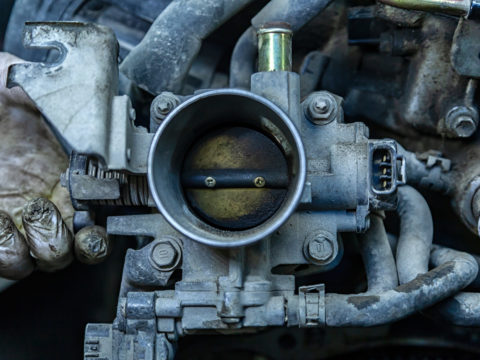One of Ford’s most significant successes engine wise was their launch of the 7.3L Powerstroke Diesel engine. With the original 7.3L Powerstroke coming out in 1994, Ford produced more than two million over a decade.

While this engine was considered top-tier for a long time for diesel trucks, SUVs, and vehicles, it’s not without problems. Even with several upgrades throughout the years, there are specific 7.3 Powerstroke years that you probably want to avoid.
If you’re getting a diesel engine truck, you’ll want to avoid the years 1994, 2001, 2002, 2003, and 2004.
Contents
7.3 Powerstroke Engines History
Before we dive into which years you should avoid, it’s essential to look at the history of this popular engine.
The first 7.3L Powerstroke engine came out in 1994 and was a massive success for Ford. While the engine was very popular, only five years later, in 1999, it underwent a significant transformation that pushed the engine’s success even higher than Ford thought possible.
Despite being so popular, Ford stopped making the engine in 2004. Over ten years, from 1994 to 2004, millions of these engines were on the road.
Millions were produced and purchased thanks to their superior function and innovative features. Ford officially replaced the 7.3L Powerstroke with the 6.0L engine in 2003.
Is a 7.3 Powerstroke Engine Reliable?
Overall, most professionals agree that the 7.3L Powerstroke engine is a reliable option as long as you keep up with regular maintenance and address any issues in a timely manner.
7.3 Powerstroke Life Expectancy
If your vehicle comes with a 7.3 Powerstroke engine, how long it lasts heavily depends on how well you take care of the vehicle. With proper care, your engine will survive as long as it can, as long as there are no accidents that damage the engine.
For those who take excellent care of their vehicles, you can expect the 7.3 Powerstroke engine to last roughly 400,000 to 500,000 miles. The life expectancy of the 7.3L Powerstroke engine is much longer than other engines, but remember, it can be significantly less if you don’t keep up with regular maintenance.
Common 7.3 Powerstroke Engine Problems
The 7.3L Powerstroke isn’t without issues despite being a fairly reliable engine. Some of the problems are more serious than others, but even minor issues are worth mentioning if you’re thinking about getting one of these engines. Here’s an overview of the most common problems with the 7.3L Powerstroke.
Failure Of The CPS (Camshaft Position Sensor)
One of the biggest problems with the 7.3L Powerstroke was with the camshaft position sensor (CPS). The CPS is an electronic device that controls the ignition system timing. It controls the ignition system timing by monitoring where the crankshaft is in the engine.
When the CPS starts failing, the truck or other vehicle won’t start or even stall when someone is driving it. It’s a frustrating issue that the engine has, but you or a mechanic can quickly fix it by replacing the stock CPS.
Turbocharger Up-Pipe Leaks
The turbocharger up-pipe in this engine is a failure in many models. The engine loses the boost and can increase the exhaust gas temperature.
Noise
Engines will make noise, but the 7.3L Powerstroke made an excessive amount of noise in many years Ford produced. The root cause wasn’t discovered, but many believe it was because of the split-shot injectors. Many people found the vehicle with this noisy engine unbearable to drive, as even turning up the music didn’t entirely drown it out.
Fuel Filter Housing Leaks
The fuel filter housing leak isn’t the most prominent failure of the Powerstroke, but it’s important to note. Leaking happens when the fuel bowl or filter housing cracks which leak fuel. Luckily, this isn’t a super significant issue, but most people can’t fix it on their own and will need to spend the time and money taking it to a professional.
EBPV Failure
The EBPV (exhaust back-pressure valve) helps the engine’s operating temperature return to normal as quickly as possible. This can be dangerous for drivers. Many of the reported issues of this happening were due to faulty electrical connections. EBPV failure made starting the vehicle more difficult and led to backfiring.

7.3 Powerstroke Turbo Failure Symptoms
Turbo failure was common with the 7.3L Powerstroke, and these were the four main symptoms drivers experienced before the failure happened.
Loss of Power
One of the most apparent symptoms of turbo failure is power loss. Loss of power could be that your engine is slow to accelerate or it’s slowly reacting to what you’re telling it to do. Another sign of loss of power is that it cannot reach the speeds it previously could.
You Need an Oil Change
Your engine needs oil to keep everything running smoothly, and if you haven’t changed your oil in a while, coupled with any of the other symptoms on our list, it could be a sign of turbo failure.
Exhaust Smoke
Vehicles produce exhaust smoke, but you’ll need to monitor the color of the smoke. When you see a blue or gray hue, oil has leaked into the exhaust system, and it could be a symptom that your turbocharger isn’t working correctly. Blue or gray exhaust smoke can be symptoms of other issues, so having a professional assess the situation is critical.
The Check Engine Light is On
The check engine light being on can mean several things, but when you see the light on in addition to one or more of the above symptoms, it’s likely a sign that the turbocharger is failing. Of course, this could mean several issues with your vehicle, and you’ll need a professional mechanic to diagnose the problem and ensure you handle it accordingly.
7.3 Powerstroke Years To Avoid and Why?
You shouldn’t avoid all the various year models of the 7.3L Powerstroke, but these five are the top five with the main issues that other years didn’t have. Be sure to avoid the following years of the Powerstroke engine.
1994
Even though this was the first year the engine was launched, there are better ones than this. It was a good engine, but there were several issues like difficulty starting, backfiring, etc. The issues with this year and the following five are why they did a significant upgrade in 1999.
2001
One of the main problems with the 2001 Powerstroke was it’s prone to EBPV failure. The 2001 model also had fuel leaks and other little problems like with the CPS, but the one issue that almost everyone experienced was the engine being noisier than it should be.
2002
The 2002 Powerstroke was known to have a severe issue with the CPS. While relatively simple to fix in the grand scheme of things, it’s frustrating and can be a hassle. Much like the 2001 and 2003 models, it was also prone to EBPV failure.
2003
Many Ford enthusiasts and other diesel engine lovers were hopeful that Ford would improve from the previous two years when they launched the 2003 model, but they were sadly mistaken. Some even say that the 2003 model was worse than the 2001 and 2002.
Like the previous two years, the 2003 model and one of the last years of the Powerstroke had plenty of reported EBPV failures. There was an overall decrease in the engine’s performance and capabilities that many drivers were upset about.
2004
2004 was the last year that the Powerstroke was made, so anything Ford could have done to improve the previous year’s issues wasn’t considered. This year experienced all of the same problems as the previous three years, which might be why Ford retired the engine in 2004 in addition to producing a newer and what they call “better” diesel engine.
Best Year Powerstroke 7.3 Diesel
With over a decade worth of 7.3L Powerstroke Diesel engines to choose from, which year or years are the best? It would help if you didn’t go with 1994 or one from 2001 to 2004. The best years for the Powerstroke engine would be from 1998 to 2000.
1999 was when the engine underwent one of the most substantial performance improvements, but even the 1998 option was still great. From 1999 to 2000, the best 7.3L Powerstrokes were released.
Some of the changes in 1999 that make the 1999 and 2000 options the best include:
- New 4R110 Automatic Transmissions
- Air-to-air intercooler
- ZF-6 speed manual transmissions
Should You Buy a 7.3 Powerstroke Engine?
Whether you should or shouldn’t purchase a 7.3L Powerstroke engine is up to you. It’s been decades since the production of the engine. Therefore it has yet to undergo any performance improvements since 1999. This fact alone is enough to deter some people from buying this engine, but it only prevents some.
If you’re still set on obtaining one of these Ford engines, you should buy one from their best years. The best years of the 7.3 Powerstroke were 1999 and 2000. They have some of the best features and performance of all the years. Whatever you do, you shouldn’t get a Powerstroke if it’s a 1994, 2001, 2002, 2003, or 2004 model.














